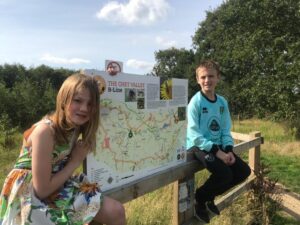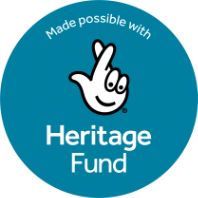Chet Valley B-Line

The Chet Valley B-Line is an ambitious local project to help stop pollinator decline, including the much-loved bumble bee, by creating a 3km wide pollinator-friendly corridor along the River Chet. Funding was provided from the Water, Mills & Marshes’ Grand for a Grand Idea small grants project.
We are working to improve habitats for bees, hoverflies, butterflies and other pollinating insects along a 17km stretch of the Chet – from its source in Poringland to Hardley, where it meets the Yare and joins the national B-Line network. Locally the Yare, the Bure and Waveney are all part of the national network.
B-Lines were devised by the charity Buglife to provide corridors of pollinator-friendly habitat to facilitate their dispersal and survival in a changing environment across an otherwise adverse landscape.
The threats are a combination of habitat fragmentation, agricultural intensification (including pesticide use) and climate change. Loss of pollinators is a conservation disaster and has huge economic consequences for global agriculture.
The corridors work by providing ‘stepping stones’ of habitat, preferably no more than 500m apart, with flowers for nectar and pollen, food plants for larval stages, and suitably structured vegetation for protection from predators. There are many aspects of land and garden management that can help.
We will achieve our aims to boost pollinator numbers by increasing and linking together ‘stepping stones’ of flower rich habitat through:

- Working alongside FWAG with farmers and landowners
- Advising public bodies on planting plans and grass cutting practice
- Encouraging wildlife gardening by the public
What you can do to help
- Avoid harmful pesticides
- Plant pollinator friendly flowers
- Provide a home – a patch of long grass and a source of fresh water
Our projects so far have included enlisting the support of Parish Councils, churches, schools, businesses, individuals, and community groups. Providing site specific and general advice on and planting pollinator hedges, bulbs, wildflower meadows and wildlife gardening. Challenging grass cutting practice by other organisations. We are particularly proud that all three doctors’ surgeries now have wild areas. Look out for our roundel that marks these sites.

If you want to record that your garden or other area of land is part of the Chet Valley B-Line then enter it on the Buglife website here and click the box “Submit Your Details”. Please record the organisation as Chet Valley B-Line in the appropriate box.
How to contact The Chet Valley B-Line
By email chetvalleybline@gmail.com
Follow us on Facebook here
or visit our Website here
Project Management and Supporters
The CVBL project is led by Bergh Apton Conservation Trust (BACT) but works closely with Norfolk Wildlife Trust (NWT), South Yare Wildlife Group (SWYG), and Norfolk Farming and Wildlife Advisory Group (FWAG). It is funded by the Water, Mills & Marshes Landscape Partnership Scheme administered by the Broads Authority and is supported by Buglife (National Invertebrate Conservation Trust), Norfolk Naturalists Trust, The Woodland Trust and is part of the RHS Its Your Neighbourhood scheme.
The CVBL Management Group is chaired by Anthony Davy, Emeritus Professor of Ecology at the University of East Anglia and Chair of Bergh Apton Conservation Trust (BACT), and comprises Bob Kerry (BACT Treasurer), Matt Jones (NWT Living Landscapes Officer), Rodney Aldis (SWYG) and Andrew Milner.




